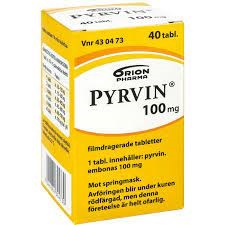Rabies-Imovax | Rabies vaccine uses, dose and side effects
Rabies-Imovax is a vaccine given to prevent rabies and for pre-treatment after exposure to rabies infection, regardless of age.
Read MoreQutenza – Capsaicin uses, dose and side effects
Qutenza contains capsaicin and belongs to the group of anesthetics .
Read MoreQuinsair -Levofloxacin uses, dose and side effects
Quinsair contains an antibiotic called levofloxacin. It belongs to a group of antibiotics called fluoroquinolones .
Read MoreQuilla simplex | Ammonium Chloride, Quillaia Extract Uses, Dose, And Side Effects
Quilla simplex is known to have expectorant and cough-promoting properties. Cough that is only temporary and has thick mucous.
Read MoreQuetiapine Stada – Quetiapine uses, dose and side effects
Quetiapine Stada contains a substance called quetiapine. Quetiapine belongs to a group of medicines called antipsychotics. Quetiapine Stada can be used to treat several diseases, such as:
Read MoreQuetiapine Sandoz – Quetiapine uses, dose and side effects
Quetiapine Sandoz contains a substance called quetiapine. Quetiapine belongs to a group of medicines called antipsychotics.
Read MoreQuetiapine Orion – Quetiapine uses, dose and side effects
Quetiapine Orion contains a substance called quetiapine. This belongs to a group
Read MoreQuetiapine Krka – Quetiapine uses, dose and side effects
Quetiapine Krka contains a substance called quetiapine. Quetiapine belongs to a group of medicines called antipsychotics. Quetiapine Krka can be used to treat a number of diseases, such as
Read MoreQuetiapine Hexal – Quetiapine uses, dose and side effects
Quetiapine Hexal contains a substance called quetiapine. Quetiapine belongs to a group of medicines called antipsychotics. Quetiapine Hexal can be used to treat a number of diseases, such as:
Read MoreQuetiapine Teva – Quetiapine uses, dose and side effects
Quetiapine Teva contains a substance called quetiapine. Quetiapine belongs to a group of medicines called antipsychotics. Quetiapine Teva can be used to treat a number of diseases, such as:
Read MoreQuetiapine Accord – Quetiapine uses, dose and side effects
Quetiapine Accord contains a substance called quetiapine. It belongs to a group of medicines called antipsychotics. Quetiapine Accord can be used to treat a variety of ailments, such as:
Read MoreQuetiapine Actavis – Quetiapine uses, dose and side effects
Quetiapine Actavis contains a substance called quetiapine. It belongs to a group of medicines called antipsychotics.
Read MoreQuestran Loc – Cholestyramine uses, dose and side effects
4 g powder for oral suspension , sachet
cholestyramine
Questran – Cholestyramine uses, dose and side effects
4 g powder for oral suspension , sachet
cholestyramine
Qtern – Saxagliptin / Dapagliflozin uses, dose and side effects
Qtern contains the active substances saxagliptin and dapagliflozin. Both belong to a group of drugs called “oral antidiabetics”. These drugs are taken by mouth for diabetes .
Read MoreQlaira – Estradiol valerate / Dienogest uses, dose and side effects
film-coated tablets
estradiol valerate / dienogest
Qarziba – Dinutuximab beta uses, dose and side effects
Qarziba contains dinutuximab beta, which belongs to a group of medicines called “monoclonal antibodies”. These are proteins that you specifically recognize and bind to other unique proteins in your body. Dinutuximab beta binds to a molecule found on cancer cells called disialoganglioside 2 (GD2). This activates the body’s immune system so that it attacks the cancer cells.
Read More
Pyrvin – Pyrvinium Embonate Uses, Dose, And Side Effects
Pyrvin is effective against tapeworm as a single dose. The remedy is repeated once 2 weeks. It kills the worms.
Read MorePyridoxine Meda – Pyridoxine hydrochloride uses, dose and side effects
Pyridoxine hydrochloride ( vitamin B 6 ) is important for the body’s egg white metabolism. The daily requirement is estimated at 2-4 mg.
Read MorePursennid Ex-Lax – Senna glycosides uses, dose and side effects
Pursennide Ex-Lax contains senna glycosides and belongs to a group of medicines that increase the movements of the colon.
Read MorePuri-nethol | 6-mercaptopurine uses, dose and side effects
Puri-nethol contains the active substance 6-mercaptopurine. 6-mercaptopurine belongs to a group of medicines called cytotoxic drugs (also called cytostatics ) and works by reducing the number of new blood cells that your body produces.
Read More